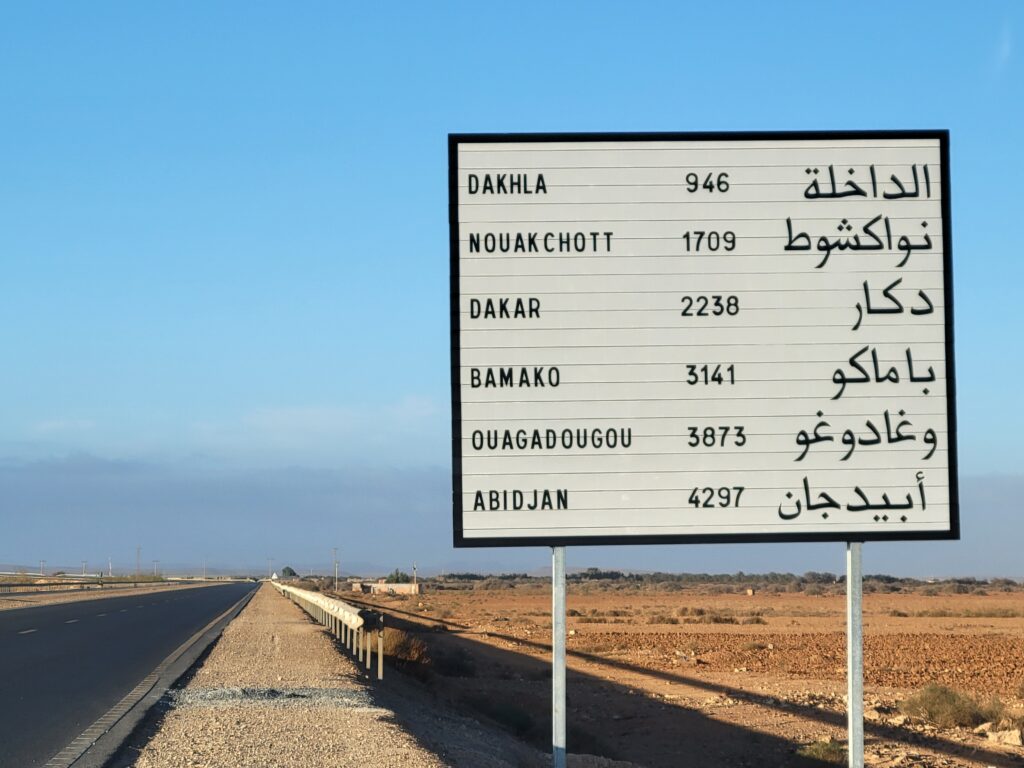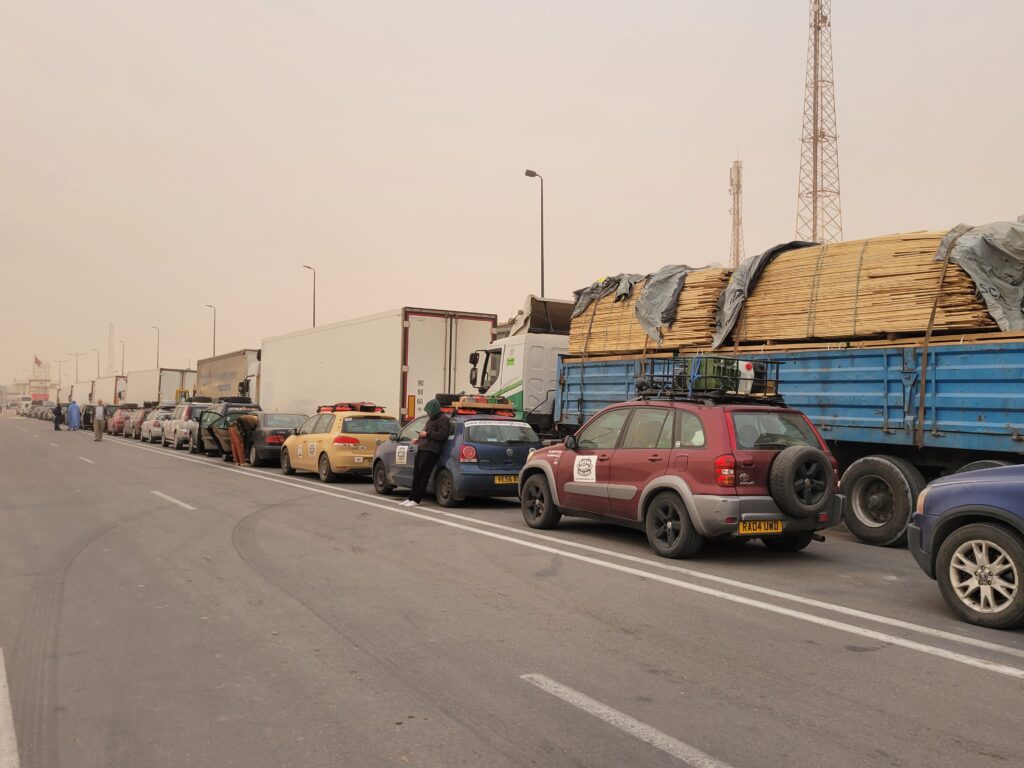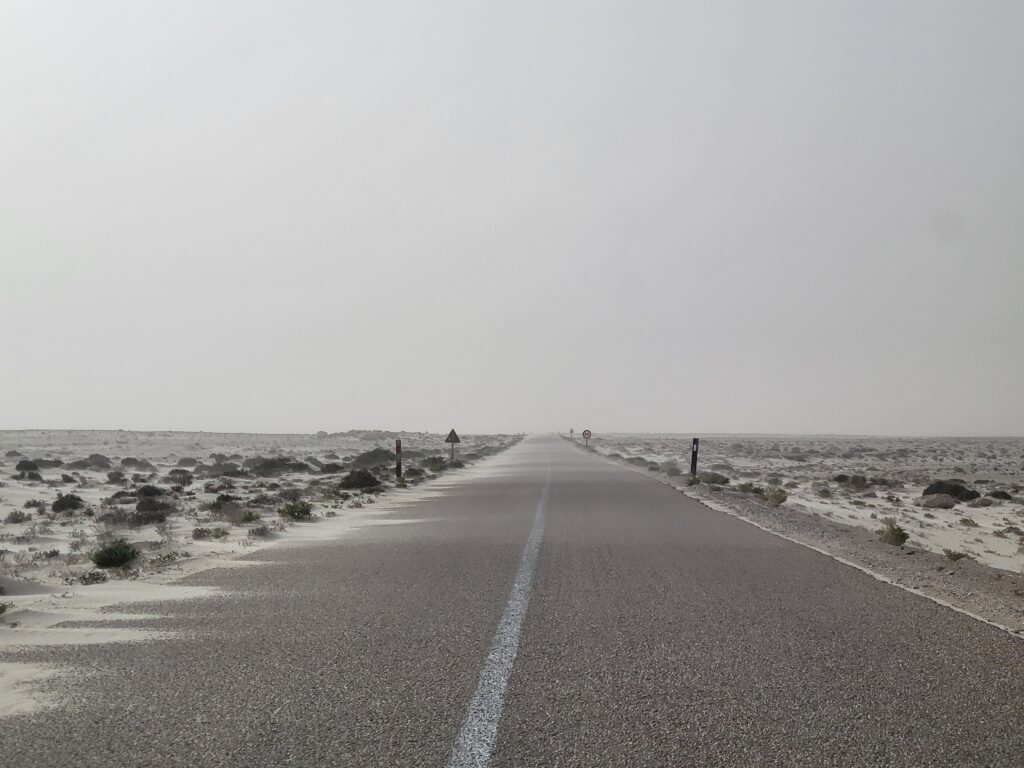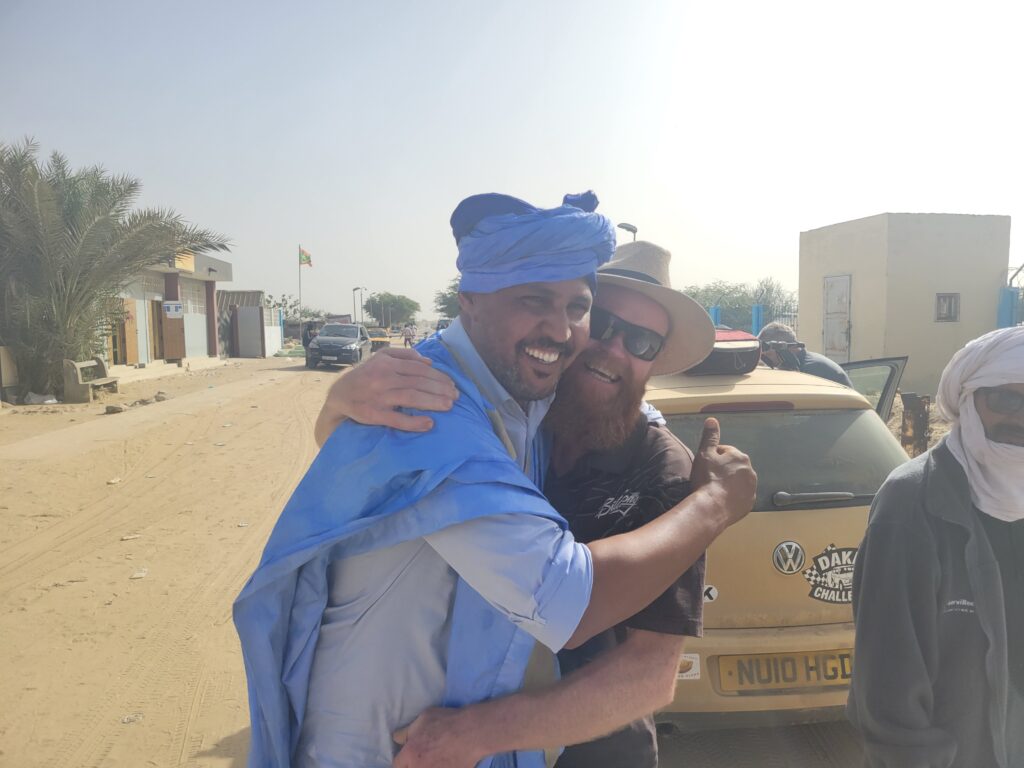Looking for an adventure? One which raise’s money for good causes, and allows you to see some of West Africa’s hardest to reach destinations? Then the Dakar Challenge is for you. The Dakar Challenge starts in the UK, and finishes in Banjul, The Gambia. It’s not a race, and you can take as much time as you like. Most competitors take around three weeks to reach the finish line in Banjul. There is no set route, and you can explore Europe and Morocco at leisure, or travel with other teams, it’s entirely up to you. Teams meet in Western Sahara, near the Mauritanian border. We completed the Dakar Challenge in 2024. We share our personal experience and useful things to know for those wanting an adventurous road trip.
Not to be confused with the Paris to Dakar Rally, the famous race which is now is held in Saudi Arabia, the Dakar Challenge is a charity event. When you reach Banjul, you will hand over your keys and farewell your trusted car, which will be cleaned and polished, before being auctioned off, with the funds raised going to various local charities. Since 2005, when the Dakar Challenge started, more than one million dollars has been raised for local organisations in The Gambia.
We spent nine weeks travelling in ‘Dusty’, our Dakar Challenge car. We explored Spain, Portugal, Morocco, Western Sahara, Mauritania, Senegal and The Gambia.
Sounds like an adventure, right? Let’s go!

So where to begin?
The first step is to contact the challenge manager, Dakar Dave. www.dakarchallenge.co.uk. He will give you instructions on how to make your entry payment, around AU$800. This covers all the necessary arrangements on the ground. Once you’ve paid, you will receive what’s called ‘the roadbook’, a race guide, with loads of valuable information and instructions. It also contains the Fiche forms, which you will need during the trip. It’s then up to you to plan your route, stops, and adventure.
Now you need some wheels. Look for something reliable, not too expensive, remembering that cars must be donated at the end. Prepare it as best you can, and off you go. For competitors from outside of Europe like us, there’s a local English guy who will find you a car, get it ready, load it up with spare tyres, tools, pumps, jerry can, jumper cables, and of course duct tape. All the necessary paperwork will be prepared, your car will be ready to drive away. Allen from Oddball Motors is the man to see. Dave will put you in touch with him.
Car insurance is a must. For non UK residents like ourselves, it is hard to find and expensive. We used Sterling Insurance, one of the only ones we could find. It cost us AU$530 for three weeks! You only need it to get to Morocco, where you purchase insurance at the ferry terminal near customs, when entering the country. The cost is around AU$180 for one month.
Where you meet the group
The rally officially starts around the middle of January, in Tarifa, Spain, but you can head off whenever you want to. We left in early December and spent a month in Morocco. We met up with the rest of the rally teams in Southern Morocco in late January.
You can travel with the main group, or explore on your own, whatever suits you. It all depends on how much time you have, and how adventurous you want to be. We joined up with the group in Western Sahara, near the border, for the Mauritania section. This part of the rally is best done together with the other teams.
You will be supplied with contacts in each country, who will assist with border crossings, paperwork and any other help you may require.
Ferry crossing from UK to Spain
As the time approaches, you head to the UK, pick up your car from Allen at Oddball Motors, which is out towards Oxford, and head off to The Gambia. We took the ferry from Portsmouth to Santander in Northern Spain, then spent a couple of weeks driving down through Portugal. The ferry takes around thirty-three hours. You get a cabin, with ensuite and TV. We always travel with a flash drive loaded with movies and shows, this is a great way to pass the time on the ferry. There’s a couple of restaurants, a bar, and a duty free on board.
The ferry saves you loads of time, and by the time you take into account the fuel and accommodation required when driving down through France, the ferry is actually the most cost effective option. There’s no restrictions on what you can take onboard, so you can bring your own food and alcohol to save money. The price of the ferry increases the later you leave it to book, so get in early. Early bird tickets are around AU$700. Once you reach Santander, Spain, you can head straight down to Tarifa, where the ferries depart for Morocco. This is where teams meet in January if you choose to travel with the others, or if you have time, you can explore some of Spain or Portugal on your way down to Tarifa.
We headed across to Portugal, and spent ten days driving down through the country, heading towards the ferry. Remember it’s winter at this time of year, so places will be a little chilly.
Ferry crossing to Morocco
We had plenty of time, so once we reached Tarifa, we crossed on the ferry to Morocco, and celebrated New Years in Tangiers, which was awesome. There’s a few different ferries that make the crossing, and they leave and arrive into different ports, so double check the ferry is departing and arriving at your desired location. We crossed from Tarifa to Tangier Ville, which is right in Tangiers, using FRS ferries, costing AU$320 one way for two people and a car.
Arrival was simple, drive off the ferry, follow the arrows, hand over your passport and car documents (supplied by Oddball Motors), and you will receive a small card, which is your car permit. Don’t lose this. Keep it safe. You need it to exit Morocco. We spent the next four weeks exploring Morocco in the car, heading South towards Dakhla, and the Mauritanian border, where we met the rest of the group.

Entering Mauritania
All teams will meet up at the Hotel Barbas in Western Sahara in late January. This is where you travel in groups through Mauritania and into Senegal. The night will be spent catching up with the rest of the competitors, taking care of any fees, and making plans for the next few days. You head off early for the Mauritanian border, around six am. It’s an hour’s drive to the border. There is very little in the way of resources here, so bring plenty of water and food. It’s a long process.
It took us seven hours when we did it, which was the quickest on record for the rally! There’s a lot of waiting, more waiting, paperwork, and more waiting. Eventually everyone will be processed, and you will be on your way. It would be very challenging to attempt this on your own, crossing as a group with the help of your local fixers is an absolute must.
Desert or Road?
After clearing customs, teams split into two groups, one group heads off into the desert for a couple of nights camping, and the other group sticks to the road and heads to Nouadhibou or Nouakchott, the Capital of Mauritania. Nouadhibou is the only real option, as it can be reached in an hour’s drive, and Nouakchott is a six hour drive. We travelled to Nouadhibou. It turned out it was just us! The road is terrible in places, but there’s only one road, so you can’t get lost. Plenty of checkpoints, just follow the instructions, smile and wave, have your Fiche forms ready, and you will be fine.

We found a great guesthouse to stay in Nouadhibou, Nouadhibou Guesthouse. After a long dusty day, it was great to have a shower and relax. We headed off to the capital the following day.
Nouadhibou to Nouakchott is a big drive, so it’s best to fill up your jerry can, and get whatever else you need, as there’s very limited resources along this stretch of the country. Once you reach Nouakchott, you will have a couple of nights to chill while you wait for the other teams to return from the desert. A rendezvous point and time will be confirmed, and teams all meet there to head to the Diama border crossing into Senegal, a bumpy and dusty five hour ride. You then cross the border into Senegal as a group, and head to St Louis in Senegal.
Heading to Senegal
It is your responsibility to make sure you have a visa for Senegal, if you require one. These are no longer issued at the border. They must be obtained in advance. Travelling on Australian passports, we required a visa. It’s best to get before you leave home, or if you have no Senegalese Embassy in your home country, there is one in Morocco. This is another long day, plan on around ten hours from leaving Nouakchott to reaching St Louis.
The teams then spend a couple of days relaxing near St Louis, before heading off for the final drive to the finish line, Banjul, The Gambia. If time allows, you can explore some more of Senegal. We spent three weeks driving around the country, before entering The Gambia. There’s loads to see and do.
The Gambia
The Gambia is a welcoming country. We entered at the Farafenni border crossing, without any dramas. We then went inland, up river, to The Gambia River National Park. We stayed at the Kairoh Guesthouse, for a few nights, right on the river. Great experience. We then made the six hour drive down the river towards the coast and Banjul, where we met the local fixer and handed over the keys to the car.
If you are travelling with the main group convoy, there will be a finish line party and dinner. This is usually in the first few days of February. If you have been exploring and taken more time, no problem, you just call the local contact when you arrive and are ready to donate your car. It will then be auctioned off, with the funds raised all going to various local causes. It is possible to visit these charities, to see how money raised in previous years is helping the local organisations.

The rally has assigned fixers at each border crossing. Without these guys, it would be a nightmare. They meet the group at or before the border, have all the paperwork already sorted, show you where to go and what to do, and assist with any issues. They speak the local language, are familiar with how things work, and are a wealth of knowledge for any questions you may have about their country.
We crossed into Morocco on our own, as we left a month before the group, and entering Morocco is straight forward. We then crossed with the other teams into Mauritania and Senegal, as this wasn’t something we wanted to attempt on our own. We spent three weeks in Senegal, and crossed into The Gambia on our own, which was fairly easy. Don’t attempt to exit Senegal on your own, unless you have some experience with foreign borders.
The finish
After nine weeks and five thousand five hundred kilometres, there was a mix of feelings upon completing the challenge. Accomplishment, satisfaction, excitement, DAM STRAIGHT, but also a bit of sadness to part with your trusty car which has delivered you to this moment. But all good things come to an end, and it’s just the beginning of a new life in The Gambia for your four wheeled friend. This is where the challenge ends, and teams head home. With new friends and countless memories, it’s not an adventure you’ll forget any time soon. Are we glad we did it? NO DOUBT. Would we recommend you to do it? MOST DEFINITELY!
